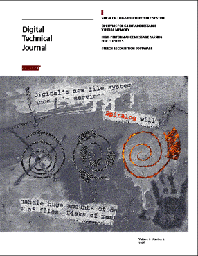|

Rich Marcello
Vice President, OpenVMS Systems Software Group
The papers you will read in this issue of the Journal describe
how we in the OpenVMS engineering community set out to bring the
OpenVMS operating system and our loyal customer base into the
21st century. The papers present both the development issues and
the technical challenges faced by the engineers who delivered
the OpenVMS operating system version 7.0 and the Spiralog file
system, a new log-structured file system for OpenVMS.
We are extremely proud of the results of these efforts. In December
1995 at U.S. Fall DECUS (Digital Equipment Computer Users Society),
Digital announced OpenVMS version 7.0 and the Spiralog file system
as part of a first wave of product deliveries for the OpenVMS
Windows NT Affinity Program. OpenVMS version 7.0 provides the
"unlimited high end" on which our customers can build
their distributed computing environments and move toward the next
millennium.
The release of OpenVMS version 7.0 in January of this year represents
the most significant engineering enhancement to the OpenVMS operating
system since Digital released the VAXcluster system in 1983.
OpenVMS version 7.0 extends the 32-bit architecture of OpenVMS
to a 64-bit architecture, allowing OpenVMS Alpha users to fully
exploit the 64-bit virtual address capacity of the Alpha architecture.
As you will read in some of the papers in this issue, however,
our design goal for OpenVMS version 7.0 went beyond just delivering
64-bit virtual address capability to OpenVMS users. It was essential
to us that OpenVMS users be able to upgrade to version 7.0 with
full compatibility for their existing 32-bit applications.
In addition to achieving the significant goals of 64-bit addressing
and compatibility for 32-bit applications, version 7.0 includes
very large memory (VLM), very large database (VLDB), fast I/O,
fast path, and symmetric multiprocessing (SMP) enhancements. These
new features recently combined with the power of the Alpha architecture
to earn OpenVMS a world record for performance. In May of this
year, OpenVMS version 7.0 on an AlphaServer 8400 system configured
with eight processors and 8 gigabytes of memory, running Oracle's
Rdb7 database and using the ACMS transaction processing monitor,
set a new world record for TPC-C performance on a single SMP system.
Audited performance was 14,227 tpmC at $269 per tpmC. Just this
past August, the combination of OpenVMS version 7.0, Oracle's
Rdb7 database, the ACMS monitor, and the AlphaServer 4100 system
achieved world-record departmental server performance. The new
world record was set on an AlphaServer 4100 5/400 system configured
with four processors and 4 gigabytes of memory. In audited benchmarks,
the performance results were 7,985 tpmC at $173 per tpmC.
Such outstanding results are achievable in a full 64-bit environment
--- hardware architecture, operating systems, and applications
such as Oracle's Rdb database. No other vendor today can deliver
this power. In fact, Digital has two 64-bit operating systems:
the OpenVMS and the Digital UNIX operating systems.
As noted above, Digital introduced the OpenVMS operating system
with support for full 64-bit virtual addressing at the same time
it introduced the Spiralog file system, in December 1995. The
Spiralog design is based on the Sprite log-structured file system
from the University of California, Berkeley. With its use of
this log-structured approach, Spiralog offers major new performance
features, including fast, application-consistent, online backup.
Further, it is fully compatible with customers' existing Files-11
file systems, and applications that run on Files-11 will run on
Spiralog with no modification. To deliver all of the features
we felt were essential to meet the needs of our loyal customer
base, the Spiralog team examined and resolved a number of technical
issues. The papers in this issue describe some of the challenges
they faced, including the decision to design a Files-11 file system
emulation.
The delivery of the OpenVMS version 7.0 operating system and the
Spiralog file system are part of Digital's continued commitment
to the OpenVMS customer base. These products represent the work
of dedicated, talented engineering teams that have deployed state-of-the-art
technology in products that will help our customers remain competitive
for years to come.
In the OpenVMS group as elsewhere in Digital, we are committed
to excellence in the development and delivery of business computing
solutions. We will continue to maintain and enhance a product
portfolio that meets our customers' need for true 24-hour by 365-day
access to their data, full integration with Microsoft Windows
NT environments, and the full complement of network solutions
and application software for today and well into the next millennium.
|
|